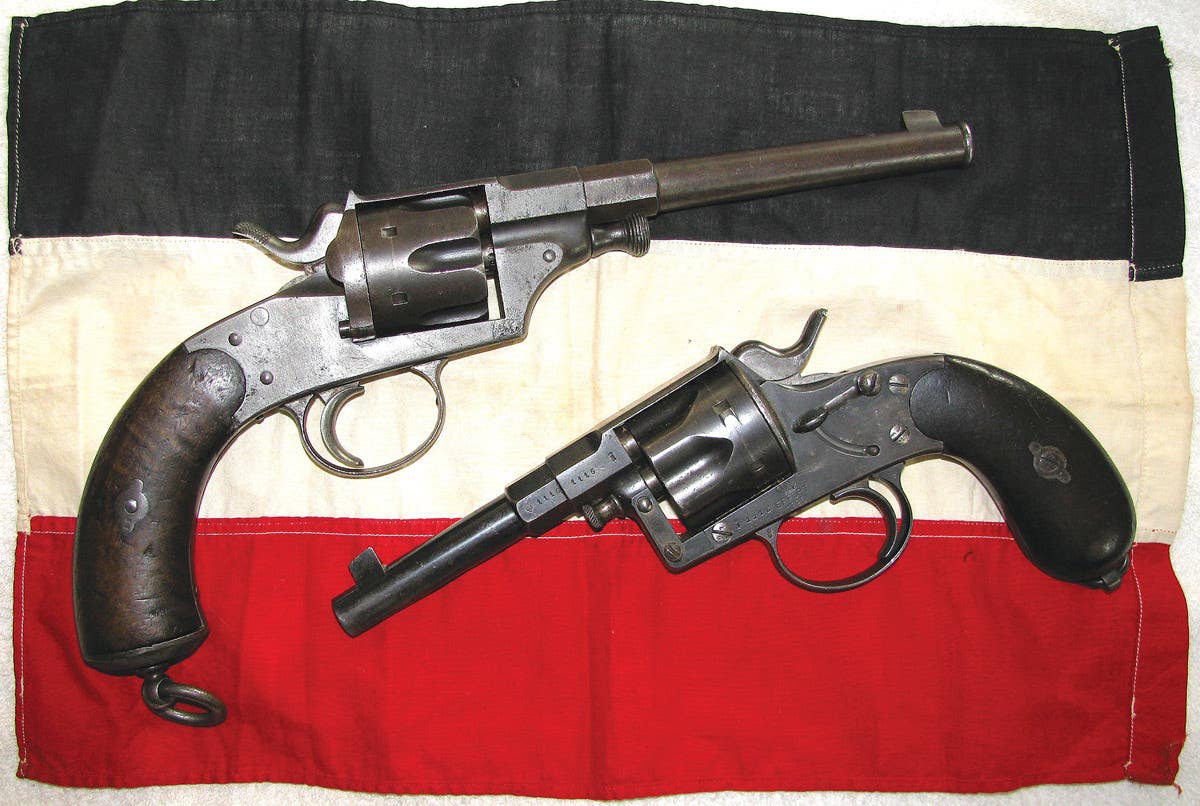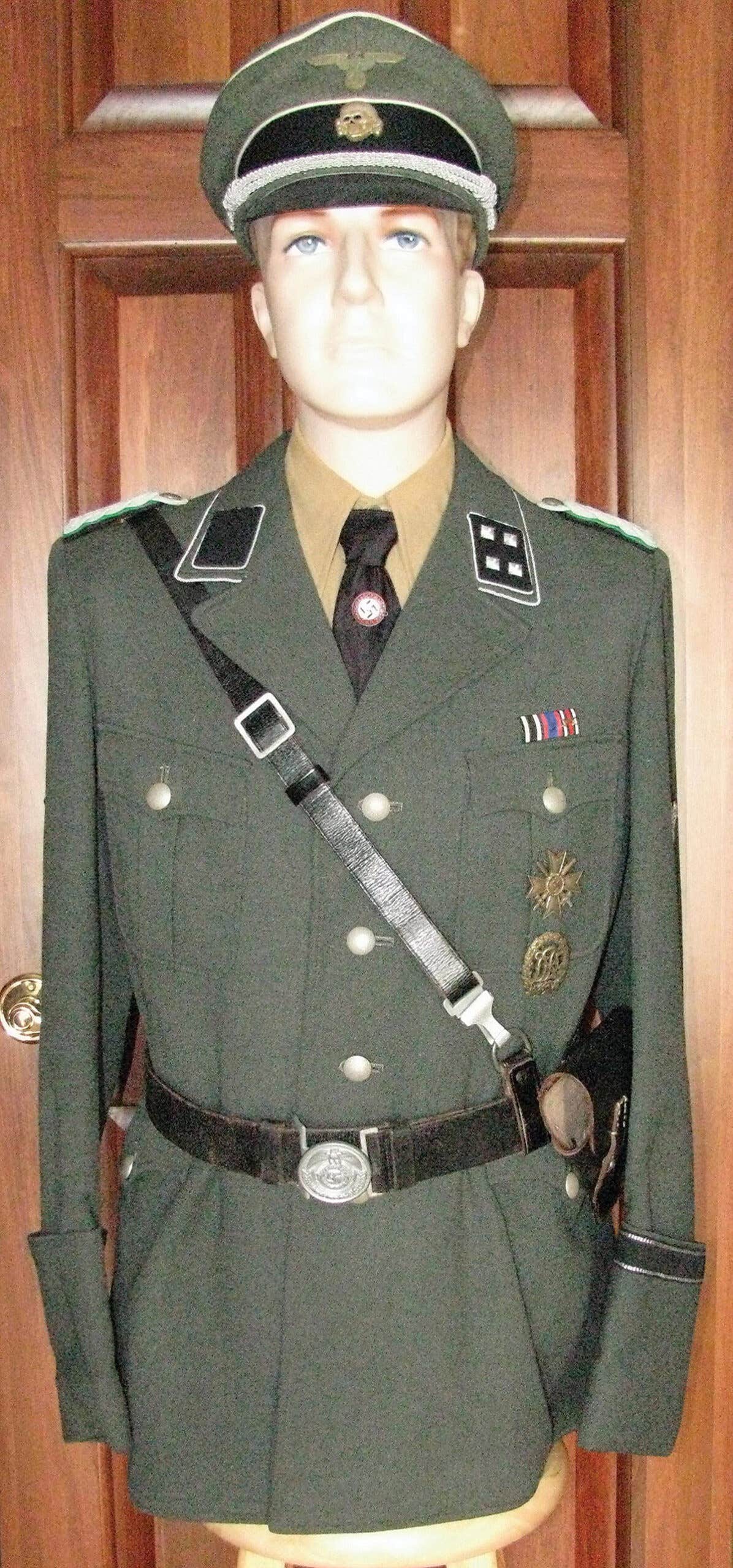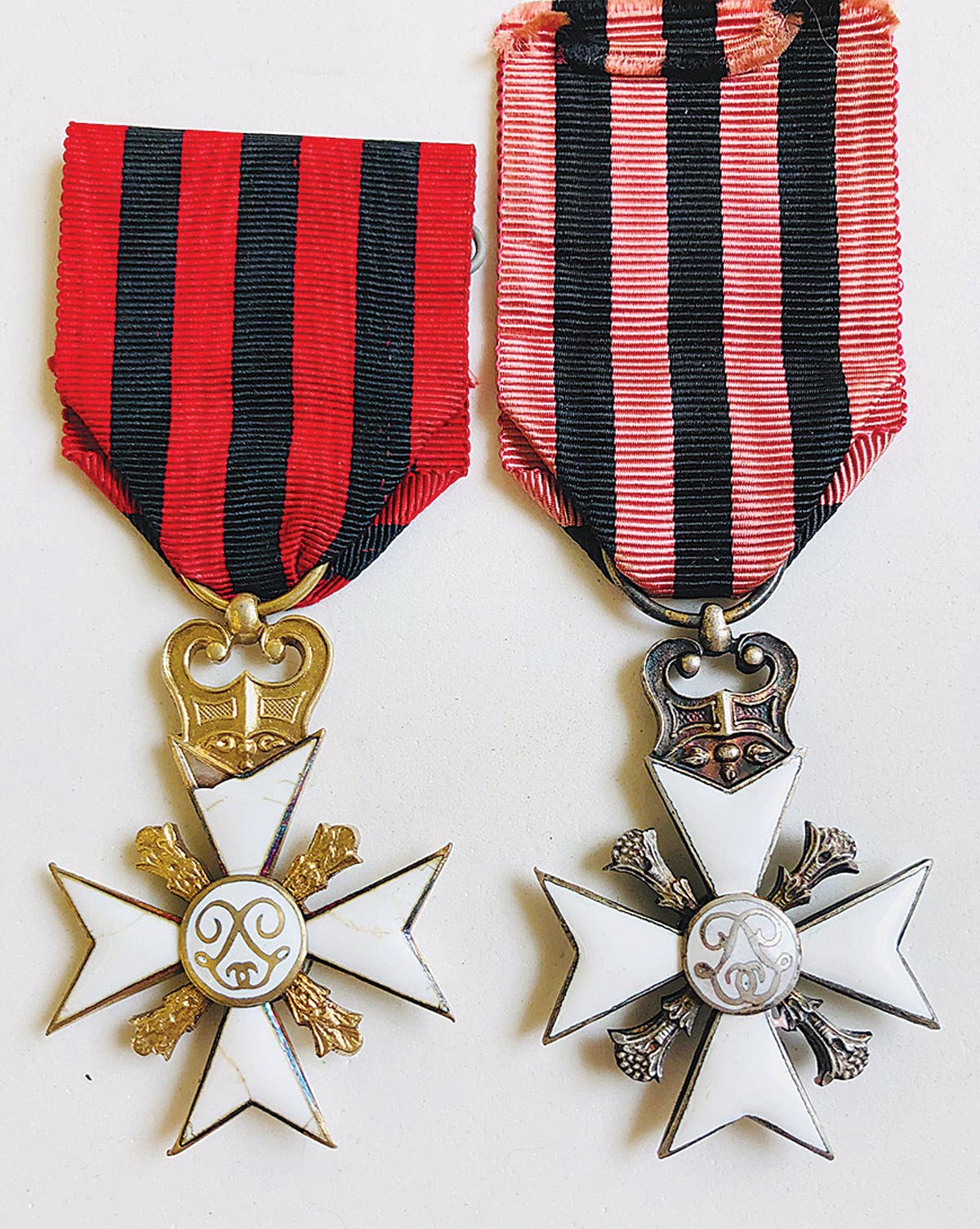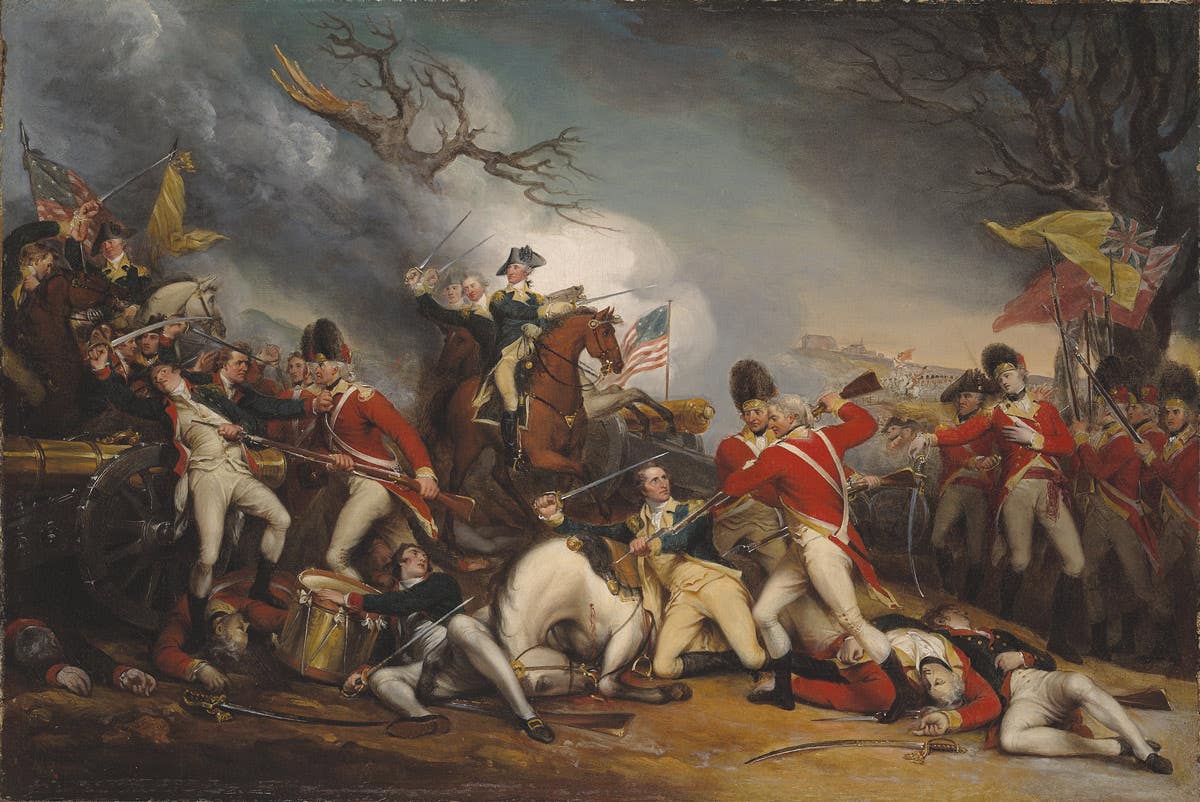GOIN’ SHOOTIN’ WITH MY MUZZLELOADER
Memories stirred by a Remington “Zouave” and a Thompson Center “Seneca”
My big brother, Joe, often reminds me: “Any day at the range is better than a day at work.”
So, when I found myself home alone on a recent Sunday morning — despite it being five below zero outside — I decided it was a good day to go to the range. Little did I know, however, that I would also drum up some old memories.
WHAT TO TAKE?
An impromptu decision to go shooting leads to an exciting consideration. As I munched a piece of leftover pizza with my morning coffee, I pondered the most important question: Which firearm am I going to take to the range today?
It doesn’t seem to matter how old I grow. When I ask myself what weapon I will be shooting, I hear my Dad’s voice in my head: “If you have time to go shooting, you have time to clean your weapon.” In other words, “If I don’t want to clean it, don’t shoot it.”
With that sage advice in the back of my brain, I started to run down the weapons I knew were at my disposal at my home (as opposed to my "office" weapons!):
*M1 Garand: No, it’s heavy and at nearly buck and a half a round, a bit expensive for a day of plinking
*AR-15: No. While it is super fun to shoot, especially since my big bro gave me an ACOG sight for it, I can never remember how to break it down for cleaning. I end up watching a couple of YouTube videos before I remember all the steps. I just didn’t feel the urge to shoot hundreds of rounds followed by fumbling around with that goofy cotter pin in the bolt!
*Henry .22. While I love this little gun, I like to carry it in the woods on the hunt for rogue squirrels rather than plinking with it at the range. I just didn’t feel like playing cowboy at the range.
*Savage .30-06: My “deer rifle.” Nah. Same excuse as for the M1. Long-range shooting on a super cold day also seemed like a whole lot of work. Pass.
*My Sig 9mm pistol: I really should do a hundred rounds through it to refresh all of my training skills. This involves a number of drills at 7, 15, and 25 yards. That, too, seemed like a lot of work for a cold, crisp morning — I couldn’t picture myself moving target frames back and forth, and then fumbling to draw my pistol from under a down-filled coat. So, pass on that one, too.
By this point in the discussion with myself, I was out of pizza. I was on my second cup of coffee, and I was daydreaming more than I was planning on going shooting…the feeling was slipping fast!
If I was going to regain control of the day and not end up on the couch watching Andy Griffith reruns, I had to come to terms with shooting versus inconvenience. Think! What’s up in the closet that could be fun to shoot today?
And then, it dawned on me: I hadn’t been out muzzle-loading in years.
A LONG HISTORY OF MUZZLE BLASTS
A boy’s “first gun” is a rite of passage — at least in southeast Minnesota where I grew up. In fourth and fifth grade, I remember boys bragging about the rifles or shotguns that their parents had bought for them. I listened, but I wasn’t that interested. I wanted a musket.
Like the kid in the movie, “Christmas Story,” who badgered his parents for a Red Ryder BB gun, I was relentless in my own parental onslaught. Nightly, I read descriptions of various muskets to my Dad. He patiently listened as I explained the differences between Civil War rifles and smoothbores. But this all changed one day when I saw an ad in a magazine (was it my big brother’s Civil War Times Illustrated or maybe The American Rifleman?).
Century Arms was advertising reproduction muzzle-loading rifles. For $69, a person could purchase a Model 1863 Remington “Zouave.” For ten dollars more, you could buy a reproduction Model 1841 “Mississippi” Rifle. I wanted a REAL muzzleloading rifle!
I renewed my daily Dad-badgering with details about the Model 1863 and 1841 rifles. I searched our 10-volume set of Miller’s Photographic History of the Civil War to find photos of soldiers using either of the rifles. I made lists of accessories that I would need. And I didn’t stop talking about it.
Finally, one day after Dad closed up our grocery store (this was back in the days when a store closed at 6 PM), he told me to get in the car — we were going to La Crosse (about 25 miles away). He didn’t say why, but usually, a trip to La Crosse was for something that we couldn’t get in our little town — to me, it was a visit to the “big city.”
We rolled up to Holiday Sports Center and went inside. Looking over the guns, Dad called me to a floor rack that contained several muzzleloaders. I recognized them all: A Connecticut Valley Arms “long rifle,” a Thompson-Center “Seneca” rifle, and …
A Model 1863 Remington “Zouave.”
Dad had me handle each one — though I knew which one I wanted. The CVA was too long and heavy. The Seneca Rifle fit me like a glove. And the Zouave, at more than 9 lbs, was way too heavy. I could hardly hold it up to my shoulder long enough to pull the trigger before the barrel began to dip. Regardless, it was the rifle I wanted.
Dad tried to coax me into considering the Seneca. At .36 caliber, it was a nice gun with double-set triggers, probably great for squirrel hunting. It was certainly of a size matched to my 12-year-old body, more so than the other two. But that didn’t matter.
To me, the Seneca was a “fantasy” rifle—a new interpretation of the Prairie-styled rifles of the 1840s and 1850s. Regardless of historical anachronisms, it didn't even come close to looking like anything carried in the Civil War.
No, I wanted the Zouave. And Dad being Dad, he gave me what I wanted, even though he knew it probably wasn’t the best choice. You see, he allowed his kids to learn lessons through their own decisions — whether good or bad. He wasn’t going to tell me I couldn’t have the Zouave. He was just going to let me sink or swim on my own.
Over the months, I slowly grew into that rifle. As I got a little older, I could hold it steady enough to squeeze off a shot. Dad and I had a lot of fun shooting it.
After about a year, Dad went back to Holiday Sports and bought that Seneca. He really believed it would be a good squirrel gun. When we would go shooting together, however, I never shot that Seneca rifle — it just wasn’t a “Civil War” gun. Dad would shoot it while I rammed Minié balls down the Zouave’s barrel. We both had fun shooting our black powder guns.
By the time I was 14, I was competing in muzzleloading rifle events. I was still committed to firing that Zouave, but I wasn’t hitting too much with it. It was still a heavy gun that I couldn’t really control
One day, Dad entered an event alongside me. He carried that little Seneca up to the firing line. As everyone at the line went through the motions of firing 10 rounds at 50 yards, I watched Dad out of the corner of my eye. He took his time, measuring his powder, placing his ball, and ramming it home.
I, on the other hand, being a Civil War-nut, was busy tearing paper cartridges with my teeth, pouring the bulk of the powder in the barrel, before ramming home the Minié ball. I acted as though I was standing on the battle line as I threw my 10 rounds down range as fast as possible.
It didn't take long for me to fire my ten rounds. In fact, I was the first on the line of about 8 shooters to be done.
Meanwhile, Dad was on his third shot.
About 15 minutes passed before Dad rammed his final ball down the barrel of the little Seneca. He placed the percussion cap on the nipple, pulled the hammer to full cock, set the triggers, and took his aim.
He had a funny way of holding the rifle. Pulled tight into his right shoulder, he balanced the forestock on just two fingers of his left hand. With the drop of the hammer and the ignition of 35 grains of triple F blackpowder, that little rifle bucked up in the air before Dad recovered it to the loading position. This being his last shot—and the last shot of all those on the firing line, the range master called the line “cold.” We could go downrange to recover our targets.
I didn’t wait for Dad. I ran the 50 yards to my target. I counted the nearly ¾”-inch holes made by the heavy .58 caliber bullets of my Zouave. I found only six —and they covered an area that would require a dinner platter to hide them from view. Who knows where the other four went?
I tore down my target and walked over to the end of the line. Dad was just strolling up to his target. “How did you do, Son?” he asked, seemingly uninterested in his own performance.
“Six on the paper,” I attempted to boast.
Without any reply, we both looked at his target. There was a large, jagged hole covering the “X” and most of the 10-ring. I guess nine of his shots followed the previous to that point, with only one “floater” in the nine-ring.
I was young, proud, and committed to my Civil War rifle. I didn’t have the maturity or confidence to say, “Nice shooting, Dad.”
Instead, I turned and walked back to the firing line, leaving Dad behind to recover his target and walk back to the line by himself.
After the event, we made small talk on the drove home. It wasn’t far, only a couple of miles from the range, so there was little time to discuss our individual performances.
When we got home, we took our rifles straight to the basement for cleaning. Dad filled a couple of buckets with hot, soapy water, while I disassembled the Zouave. After he took down the Seneca, we both pulled old painted chairs up to the two buckets, sat down, and plunged the barrels of each rifle into its own soapy solution.
With patches on our ramrods, we pushed and pulled water up the barrel and out the breech. We joked about how bad it smelled. We laughed when the water we pushed out the barrel’s nipple sometimes missed the bucket and streamed across the room.
With the barrels cleaned, we started to reassemble each rifle. After about 30 minutes working together, the final step was running an oiled cloth over the metal and wood before I submitted my “Zouave” to Dad for final inspection. He looked it over, commenting that it looked good.
He ventured into the unspoken territory: “Next time, do you think you want to shoot the Seneca?”
I just looked at him. “It’s not a Civil War gun, Dad,” was my empty reply.
LIFE CHANGES AND SO DO SHOOTING CHOICES
As the years passed, I learned that the Model 1863 Remington “Zouave” was never really issued during the Civil War (and that is why, today, you can buy near mint examples for a couple of grand). By the time I was in my twenties, I had several “more appropriate” Civil War weapons that I used for shooting and reenacting.
But, everyone's shooting tastes evolve. Eventually, my gun closet contained a mix of WWI, WWII, and black rifles. All those muzzleloaders of my younger days were gone, including the Zouave that was my first rifle.
After Dad passed away, Mom felt that each of his children should have one of his guns. She made her decisions:
*My eldest brother would receive the double-barrel that had belonged to our grandpa.
*My sister would receive the .22 single shot that we used to learn to shoot.
*My middle brother would get Dad’s pump 16 gauge.
*The next oldest would get the single-shot .410.
*And to me, she handed Dad’s Thompson Center Seneca.
BACK TO THE RANGE
So, back to the other morning: While finishing my pizza and coffee, I completed the mental inventory of what was in the gun closet. In my mind’s eye, I saw the Garand, the AR, several other rifles and shotguns before I pictured a lone gun propped in the opposite corner:
Dad’s Seneca — the little rifle that he knew was just right for me, but never forced me to shoot.
Did I even have the supplies to take it out? Would I remember how to load, shoot, and clean it? I bound up the steps to my room and threw open the closet door. I knelt in front of my shooting supply boxes and began to explore. I found a powder flask (still filled with 3F powder), a tin of percussion caps, and a bag of round balls.
I had the basics. Dad’s Seneca would be the rifle I took to the range that day.
TIME WITH DAD.
There is no hiding it. I miss my Dad. I try not to dwell on it, but rather, cherish the memories and value his lessons.
That said, I can still feel Dad’s presence at certain times. When I go fishing, for example, I ask him where I should cast my line. And when I go shooting, I listen to him coach me:
“Deep breath. Release half of it. Squeeze the trigger.”
Once I got to the range with Dad’s Seneca rifle, I recalled the process of loading as I fumbled with the flask, the bag of balls, and tin of caps. Yes, it is a small rifle, but I am a small guy. It still fits me perfectly — just as Dad knew so many years ago.
I placed the cap on the nipple, pulled the rifle up to my shoulder, cocked the hammer, and set the trigger. I breathed in deep as I sighted on the target, 50-yards down range.
As I began squeezing the trigger, half of the breath I was holding passed through my lips. In that whisper — in that instant — I could hear myself say...
“Thanks for the rifle, Dad.”
Preserve the Memories,
John Adams-Graf,
Editor, Military Trader and Military Vehicles Magazine
You may also enjoy
*As an Amazon Associate, Military Trader / Military Vehicles earns from qualifying purchases.
John Adams-Graf ("JAG" to most) is the editor of Military Trader and Military Vehicles Magazine. He has been a military collector for his entire life. The son of a WWII veteran, his writings carry many lessons from the Greatest Generation. JAG has authored several books, including multiple editions of Warman's WWII Collectibles, Civil War Collectibles, and the Standard Catalog of Civil War Firearms. He is a passionate shooter, wood-splitter, kayaker, and WWI AEF Tank Corps collector.







